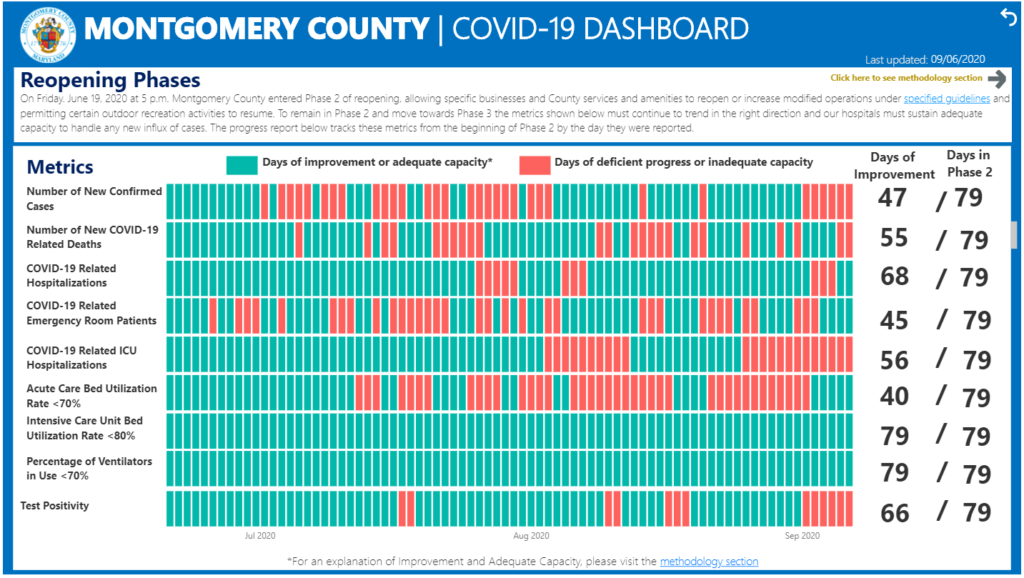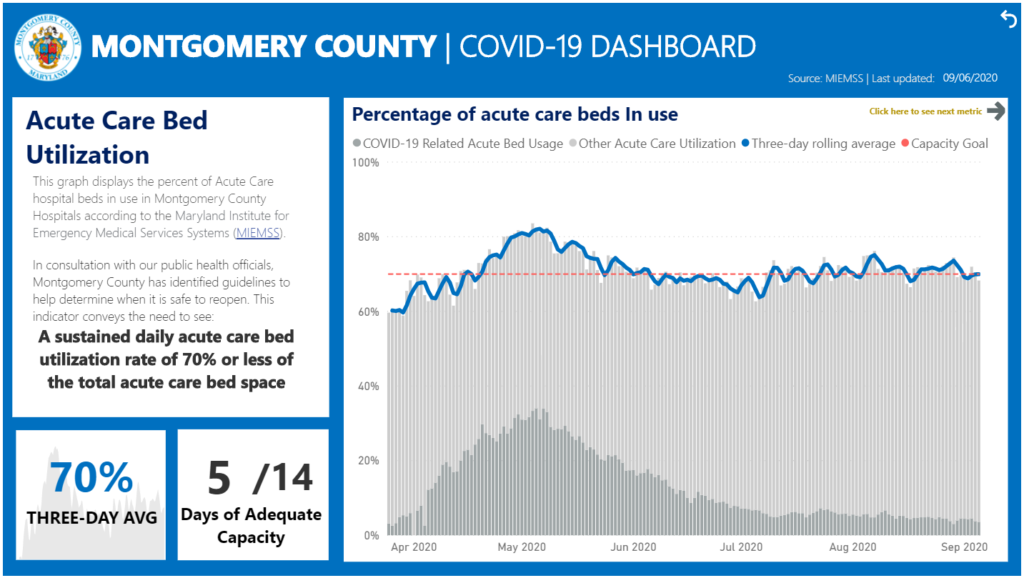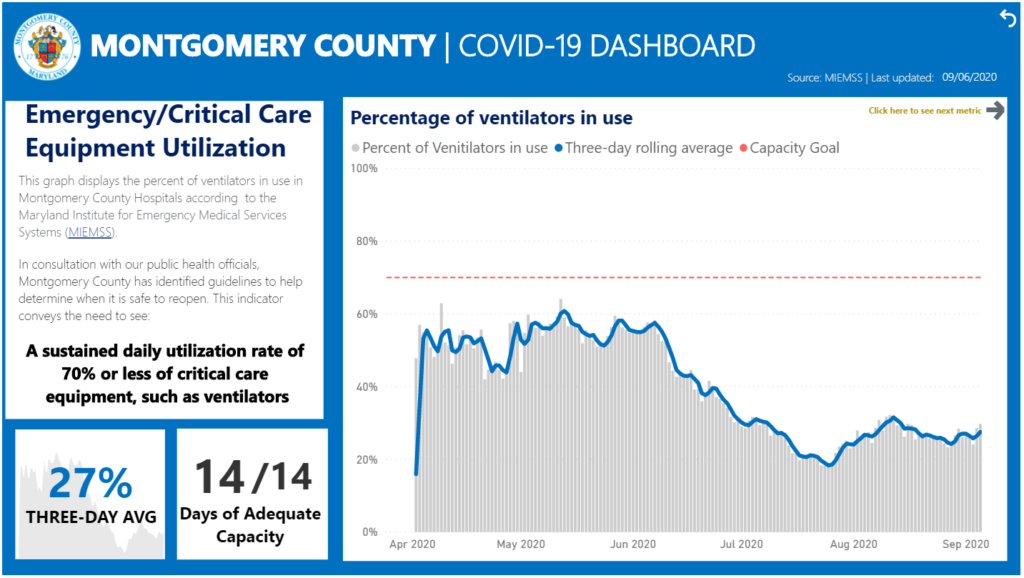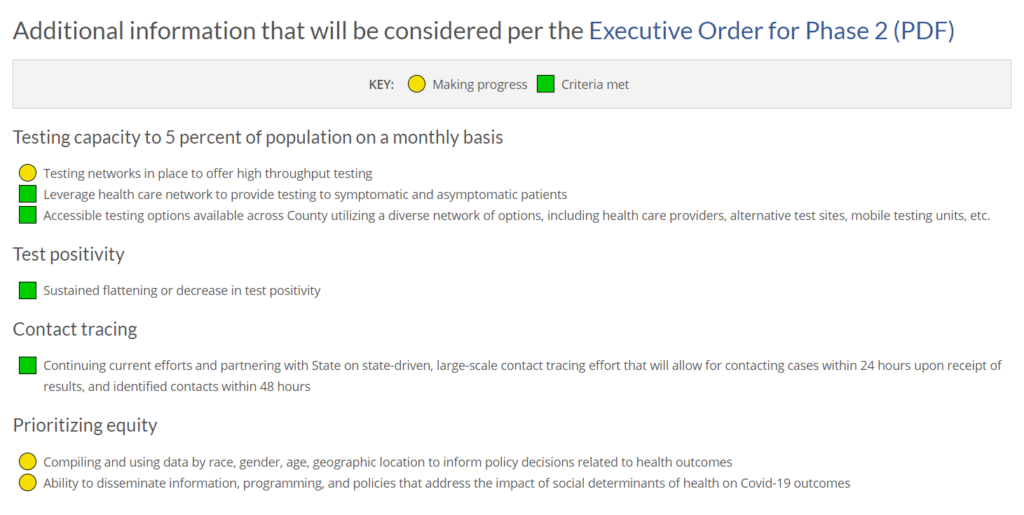By Adam Pagnucco.
Last week, Governor Larry Hogan announced that Maryland would enter phase 3 of its reopening, which included a partial lifting of restrictions on indoor theaters, outdoor venues, retail stores and religious institutions. County Executive Marc Elrich said he was a “bit disappointed” with the decision and said the governor “has again taken us by surprise.” Declaring “this is not party time,” Elrich declined to follow the state’s reopening plan, which he is allowed to do under the governor’s executive orders.
Jurisdictions around the state are split. Anne Arundel, Montgomery and Prince George’s Counties are not proceeding to phase 3. Baltimore City is not either, although it is relaxing some restrictions. Most of the rest of the state, including large jurisdictions like Baltimore County, Frederick and Howard, are moving into phase 3 with a handful of small counties not making announcements yet.
Elrich has said time and again that his reopening decisions are made based on data and science. Elrich’s critics say he is not balancing economic needs with public health and that county restrictions are driving MoCo residents to spend money in neighboring jurisdictions.
Who is right?
First, let’s look at MoCo’s COVID-19 dashboard, which tabulates 10 quantitative data points and 7 qualitative data points identified by the county as relevant to its progress. At this writing (Sunday, September 6), 4 data points (intensive care unit bed utilization, percentage of ventilators in use, test positivity and hospitalizations) have been rated adequate on at least 80% of the days since the county went into phase 2. No data points have been rated inadequate on a majority of those days, although one (acute care bed utilization rate) was close. This is not a perfect record, but it’s a decent one.

The record looks stronger when these numbers are compared to the worst days in May. Let’s look at the county’s weakest measure: acute care bed utilization rate. This measure has averaged just above 70% in the last couple weeks. It topped out at 82% in early May. Bear in mind that this is the county’s weakest measure and it has shown improvement.

Now here is one of the county’s strongest measures: the percentage of the county’s ventilators in use. In the second week of May, this measure peaked at just over 60%. It has now been under 30% since mid-August.

The qualitative criteria are even better. As of September 6, 4 criteria were judged to be met and 3 were making progress.

Elrich and his critics can each find support for their arguments in this data. Elrich can say that not every measure is where it should be and that the trend of improvement is not as robust as it was in June or July. Those who disagree can say that most measures have been improving, and if that is not enough to justify further reopening, then what is?
All of the above is just one dimension of the issue. In Part Two, we shall see how MoCo compares to its neighbors.
